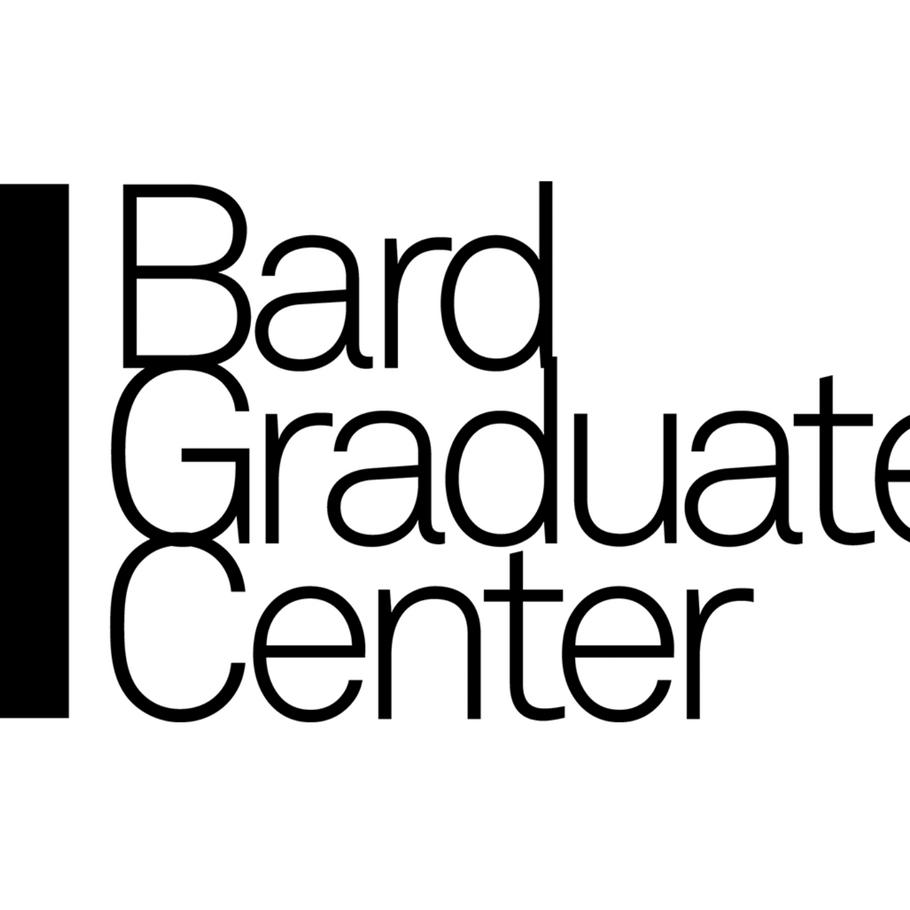
At a Glance
Ages: All
Allows Food/Drink: No
Luggage Storage: No
18 W 86th St, New York, NY 10024 Get Directions
Bard Graduate Center Gallery Videos
A guided tour of the digital exhibition As a complement to our new exhibition, Shaped by the Loom: Weaving Worlds in the American Southwest, we have created a digital project that invites you to explore the world of Navajo weaving. Highlighting Diné history, culture, and cosmology, as well as the localized and land-based knowledge systems that guide the making process, this dynamic online experience presents weaving as an art form, a cultural practice, and a lived experience. Join curator Hadley Jensen and the Director of Digital Humanities/Exhibitions at Bard Graduate Center Jesse Merandy for a virtual walk through of this collaborative multimedia project. Learn more about its background, development, and design, as well as the many interactive features that immerse users in the work of Diné weavers and visual artists. https://exhibitions.bgc.bard.edu/shapedbytheloom/
The Iris Foundation Awards Lecture by Elizabeth Guffey (SUNY Purchase) Monet was going blind and had to wear special cataract glasses. Renoir became so arthritic, he used a wheelchair and had paintbrushes strapped to his wrists. The history of French impressionist art is filled with legends about its most famous practitioners, their bodily impairments, and the ways these were believed to have shaped their art. This lecture uses the French impressionists and their art to introduce the notion of crip objects. In so doing, it suggests that material objects related to disability are useful in helping us understand a range of issues related to human embodiment and the sensorium, all the while raising more complex questions about artistic creativity.
A Françoise and Georges Selz Lecture Duet on Eighteenth- and Nineteenth-Century French Decorative Arts and Culture with John Finlay and Kristel Smentek (Massachusetts Institute of Technology) In this pairing of mini-lectures, scholars John Finlay and Kristel Smentek offer complementary views on arts and intercultural exchange between France and China in the eighteenth century. Henri Bertin and the Representation of China in Eighteenth-Century France (Finlay) The role of Henri-Léonard Bertin (1720–92), who served as a minister of state under Louis XV, is crucial to understanding the encounters between China and France in the eighteenth century. Bertin first established his contact with the French Jesuits in Beijing through two Chinese Catholic priests, Aloys Ko and Étienne Yang. When the missionaries returned to China in 1765, they took with them an important set of gifts to be presented to the Qianlong emperor. Not to be misconstrued as tribute from France to China, these gifts were intended to stimulate Chinese interest in French culture and French artistic production. Disorienting China: Negotiating the Foreign in Eighteenth-Century France (Smentek) As European trade with the Qing empire accelerated in the eighteenth century, France was flooded with objects from China whose technologies, materials, and motifs challenged European understanding. These ranged from the lacquers and porcelains with which historians are familiar, to scroll paintings, bronzes, and worked jades whose presence in eighteenth-century Europe is far less studied. This talk investigates the display and material alteration of Asian imports in France and the design of new objects in response to them—strategies by which the French negotiated the pleasures and disorientations of China’s arts.
A lecture by Janet Catherine Berlo (University of Rochester) In Native North American artistic traditions, what is a replica? What constitutes a copy? In contrast with the larger field of art history, there is almost no literature on forgeries and replicas in this sub-field. Join us for Janet Catherine Berlo’s lecture, adapted from the introduction to her forthcoming book, Not Native American Art. Berlo considers notions of replicas, copies, tributes, forgeries, pastiches, and even digital surrogates as they apply to archaeological, historical, and contemporary Native arts of North America. The talk will be followed by a Q&A moderated by BGC PhD candidate Leonie Treier.
Imagination rules! Enjoy children’s books read aloud by glamorous drag artists who reflect the joy, fun, and positivity of a world in which everyone can be their authentic selves.
New York has long fascinated image-makers in all genres of the visual and textual record. "Mapping New York" will be a symposium devoted to thinking and talking about visual representations of New York over several centuries and on into the future. The morning speakers will highlight several innovative new media projects--Hypercities, Digital Harlem, and Mannahatta2409. The afternoon will be devoted to presentations and discussion of the BGC Focus Gallery exhibit "Visualizing 19th Century New York" (Fall 2014) about the visual experience and spectacle of nineteenth-century New York City. The entire day will focus on spatial history, new media visualizations, digital history, and the history of New York City.
More in The Upper West Side
More Museums
- The Tenement Museum
- New Museum
- International Center of Photography
- Museum at Eldridge Street
- National Museum of the American Indian
- National September 11 Memorial & Museum
- The Rubin Museum of Art
- Whitney Museum of American Art
- The Morgan Library & Museum
- Museum of Modern Art (MoMA)
Bard Graduate Center Gallery Frequently Asked Questions
The closest subway stops to Bard Graduate Center Gallery at 18 W 86th St are the 86th Street station on the 1 train and the 86th Street station on the B and C trains. Both stations are just a short walk away from the gallery.
If you're planning to take the 1 train, you can check for any service updates or changes on the MTA website [here](https://new.mta.info/). For the B and C trains, you can find the latest information on the MTA website [here](https://new.mta.info/).
While you're in the area, there are a few other attractions you might want to check out. The American Museum of Natural History is just a few blocks away from Bard Graduate Center Gallery, and it's definitely worth a visit. You can find more information about the museum [here](https://www.amnh.org/).
If you're looking for a bite to eat, there are plenty of great options in the Upper West Side. Some popular restaurants in the area include Jacob's Pickles, a Southern comfort food spot known for their delicious biscuits and pickles, and Shake Shack, a beloved burger joint. You can find more dining recommendations in the area [here](https://www.timeout.com/newyork/restaurants/upper-west-side-restaurants).
I hope you have a wonderful time exploring the Upper West Side and enjoying the Bard Graduate Center Gallery!
The closest bus stops to Bard Graduate Center Gallery at 18 W 86th St in New York City are:
1. Central Park West/W 86 St: Served by the M10 bus. You can check for updates on the M10 bus schedule [here](http://bustime.mta.info/m/index?q=400024).
2. Broadway/W 86 St: Served by the M104 bus. You can check for updates on the M104 bus schedule [here](http://bustime.mta.info/m/index?q=400104).
These bus stops are conveniently located near Bard Graduate Center Gallery and provide easy access to the surrounding area. Make sure to check the MTA website for any updates or changes to bus schedules. Enjoy your visit to the gallery!
The ideal length of time to plan to spend at Bard Graduate Center Gallery in New York City would be around 1-2 hours. This will give you enough time to explore the gallery's exhibitions and collections at a leisurely pace, without feeling rushed. The gallery showcases a wide range of art and design objects, so take your time to appreciate the intricate details and immerse yourself in the cultural experience. Additionally, the gallery often hosts special exhibitions and events, so be sure to check their schedule to see if there's anything specific you'd like to attend during your visit.
The Bard Graduate Center Gallery in New York City does not have its own food or drink policy, as it is primarily an academic institution and exhibition space. However, it is always a good idea to check with the specific exhibition or event you plan to attend, as they may have their own policies in place. Additionally, please note that there are plenty of dining options available in the surrounding area of the Bard Graduate Center Gallery, so you can easily grab a bite to eat before or after your visit.
The Bard Graduate Center Gallery in New York City does not offer luggage storage facilities. However, there are several options available nearby where you can securely store your belongings while you explore the gallery or the surrounding area.
One convenient option is to use a luggage storage service such as LuggageHero or Vertoe. These services allow you to drop off your bags at designated locations, typically near major transportation hubs or popular tourist areas. They provide secure storage for your luggage and offer flexible hours for pick-up and drop-off.
Another alternative is to check if your accommodation offers luggage storage facilities. Many hotels and hostels provide this service for their guests, even if you have already checked out. It's worth contacting your accommodation in advance to inquire about their luggage storage options.
Lastly, if you are visiting other attractions or museums in the city, they may have their own luggage storage facilities. It's always a good idea to check their websites or contact them directly to see if they offer this service.
Remember to plan ahead and consider your options to ensure a hassle-free visit to the Bard Graduate Center Gallery and other attractions in New York City.
Yes, Bard Graduate Center Gallery is a great destination for visitors from other countries and non-English language speakers. The gallery showcases a diverse range of exhibitions exploring decorative arts, design history, and material culture from around the world. The exhibits are visually engaging and offer a unique perspective on art and design.
While English is the primary language used in the gallery, there are often multilingual materials available, including brochures and signage, to enhance the visitor experience. Additionally, the gallery staff is friendly and knowledgeable, and they are always ready to assist visitors in multiple languages.
Bard Graduate Center Gallery is conveniently located in the heart of New York City, making it easily accessible for tourists. Whether you're a design enthusiast, an art lover, or simply curious about different cultures, this gallery is a must-visit destination that offers a rich and immersive experience for visitors from all over the world.
The Bard Graduate Center Gallery in New York City is a great destination for visitors of all ages. While there is no specific age range recommended, the gallery offers a diverse range of exhibitions and programs that cater to various interests and levels of understanding. Families with children can enjoy exploring the gallery together, as there are often interactive elements and educational materials available. However, it is worth noting that some exhibitions may contain content that is more suitable for older children and adults. Ultimately, the gallery's engaging displays and thought-provoking exhibits make it a worthwhile visit for individuals of all ages.
Videos



